What do everyday meals from a majestic kitchen look like? Sunday mid-day asks aristocratic ladies what their go-to meals are on dawat-less days
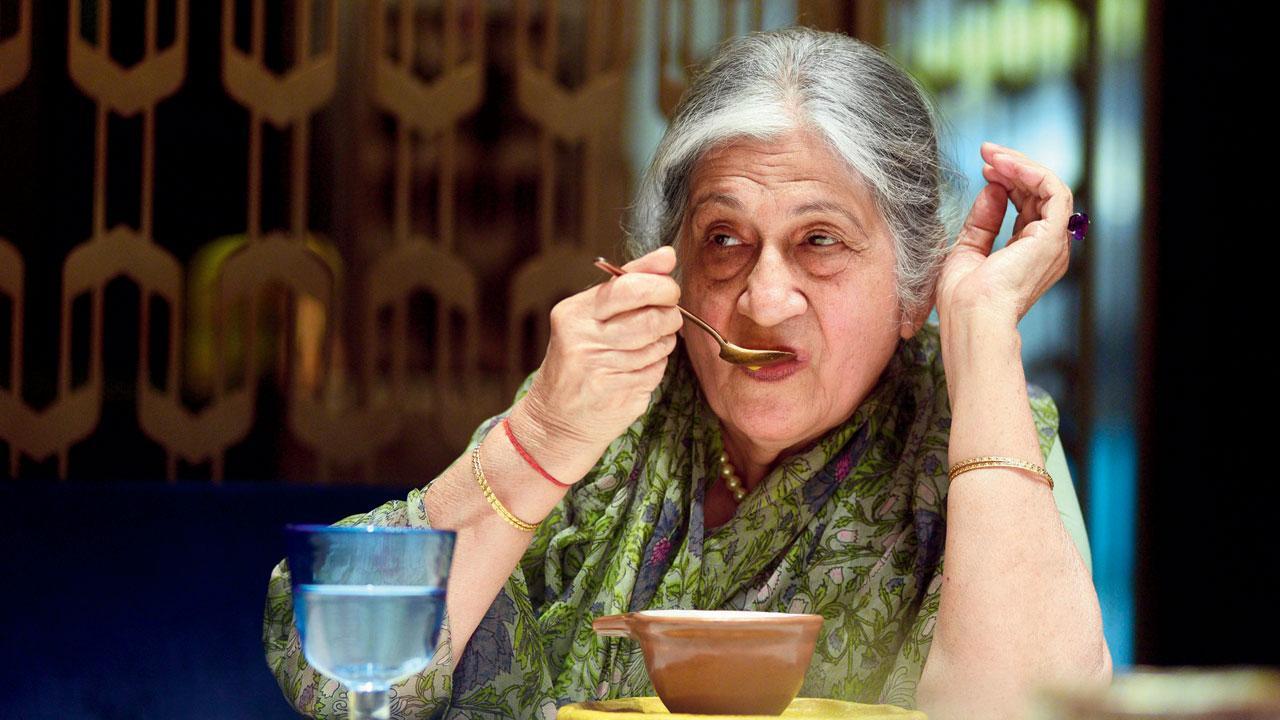
Chef Dilnaz Baig, 74, a connoisseur of authentic Hyderabad Nizami cuisine has been winning hearts with her food and putting long-forgotten dishes back on menus. Pics/Rane Ashish
Would they eat murgh-musallam with dollops of butter and ghee trickling down chicken thighs, or juicy red meats and shahi paneer in palaces and forts every single day? What would be on the silver or gold thaali when a prince or princess were coughing their wits out? What is that one dish the rajmata made that no one can replicate? Sunday mid-day spoke to some begums about comfort foods from their kitchens that are most dear to their hearts.
Matar pulao for King Wajid Ali Shah’s scion
ADVERTISEMENT
Chilkedaar moong ki khichdi and matar pulao,” pat comes Manzilat Fatima’s response when asked about her comfort food. The great-granddaughter of Awadh’s last King, Nawab Wajid Ali Shah, Fatima was only 10 years old when her tryst with food began—she helped make a steaming pot of khichdi while living with her father, Kaukab Quder Sajjad Ali Meerza, in Aligarh. He served as faculty at the Aligarh Muslim University’s Urdu department. “My mother and two other siblings had stayed back in Kolkata to safeguard the family home,” says the Kolkata resident. “I managed school, cooking and washing my clothes too. Bawa would say ‘Cook what you can—raw or undercooked—and both of us will eat it instead of ordering out every day.’”

Ayesha Ali Khan and Abha Singh
Khichdi became a staple of her growing years. “I’d cook it with ginger, green chillies and oodles of ghee and serve it with spicy, stuffed red chilli achaar from the bazaar,” says Fatima who now runs an intimate and niche home-dining experience, Manzilat’s. “This would be accompanied by curd raita containing cucumber, peppercorn, green chillies, coriander and chopped onions.”
To this date, when a family member is under the weather, moong ki khichdi is the staple. “My mouth is watering while even talking about it,” she says. “This lightest version of food is easy on an upset stomach, perfect for a fever or even a seasonal allergy. The dash of peppercorn is the panacea.”
These days, matar pulao rules her life—she’s savoured a warm plate for dinner the night before. “On days when I don’t know what to cook, matar pulao comes to the rescue,” says the King’s direct descendant, “my amma started this, and I continued the tradition. Sometimes, I pair mine with shami kebab and various condiments such as green chutney and roasted tomato chutney. It is my go-to meal for any time of the day or season.”
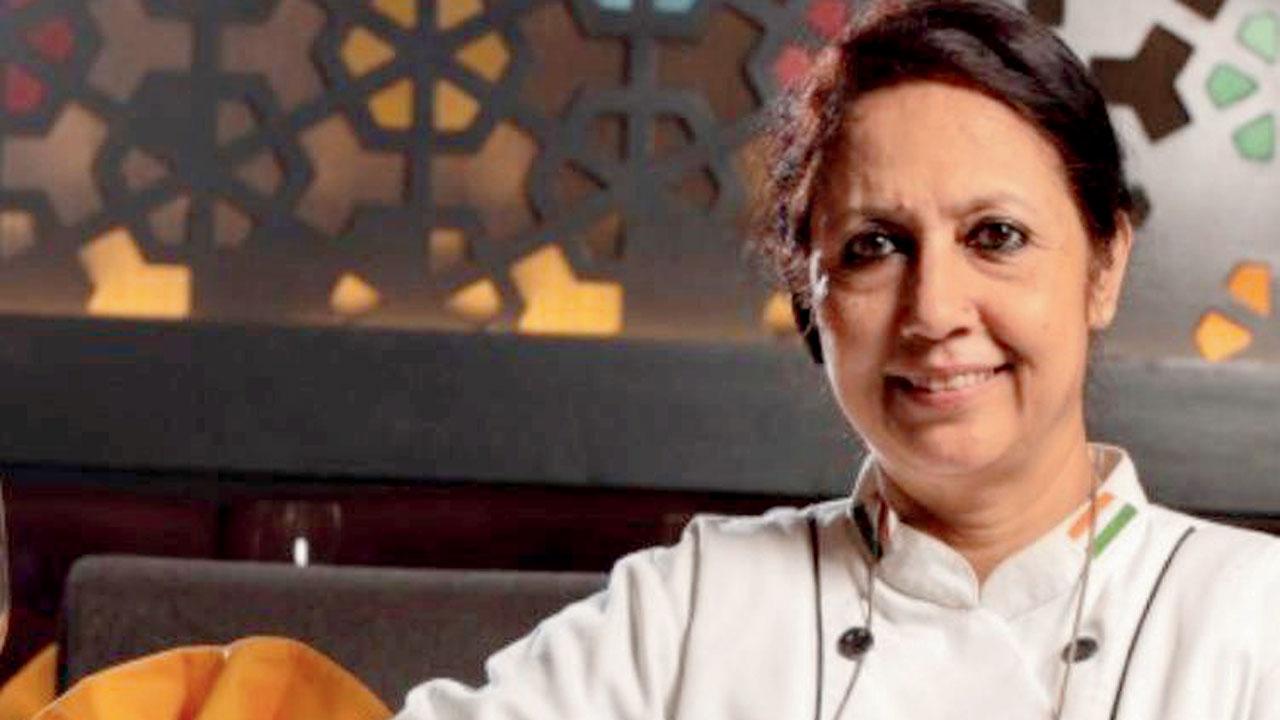
Manzilat Fatima
Another dish that Fatima remembers from her childhood and serves at Manzilat’s is her daadijaan’s ghuntwa or majlisi kebabs. “My grandma was from Matiaburj in West Bengal,” she says. “During Muharram, amma would spoon ghuntwa kebab on paratha or puri, and garnish with a slice of cucumber, smoked Bandel cheese from Kolkata’s Portuguese establishments, ginger juliennes and mint leaves.”
Fatima serves it the same way, surprising diners. “Bandel cheese comes in small brown discs, is white on the inside, and its smoky and salty flavour complements the kebab perfectly. I don’t know why my family garnished the kebabs that way; no one else does!” wonders Fatima.
Manzilat Fatima’s Awadhi matar pulao
Ingredients
1 cup Gulabkhaas /Kamini/Gobindbhog rice
1 1/2 cup shredded green peas
1 tsp ginger juliennes
1 tsp whole black pepper
2-3 whole green chillies
1 green cardamom, 2 cloves and 1 small stick of cinnamon
1 tbsp ghee
1/2 tbsp refined oil
2 1/2 cups of water
Method
Wash and soak rice for 30 minutes. Heat oil in a handi. When hot, add the whole garam masalas, followed by black pepper, ginger and green chillies, keep stirring quickly, then add green peas, stir for a minute. Add rice and lightly sauté before adding all the water and salt as per taste. Cook covered on high flame till water comes to the level of rice. Add ghee, give it a good stir, then lower the flame to sim and cook on the dumm for another 10 minutes on low flame. Switch off gas. Serve matar pulao with green coriander chutney and mashed roasted tomato bhurta.
Pulao for Pathans of Bhopal
Ayesha Ali Khan, married into the royal family and descendant of the Mirzai Khel branch of Pathans of Bhopal, says the food at her home carries influences from Bhopal, Hyderabad (her hometown), and the Middle East (where she lived for almost two decades).
“Meat is an important part of our spread,” says Ali Khan, “so lunch is generally mutton or chicken qorma, kebabs, dal, two vegetables, pulao and raita. For dinner, it is roasted or grilled chicken, khao suey, thukpa... a new cuisine every day.” Ali Khan runs a takeaway service called Bighdey Nawab serving Bhopali specials such as yakhni pulao, nalli nihari, murghi ka salan, and Hyderabadi elements such as tala-hua-gosht and baghare tamatar.
But the comfort of a simple dal-chawal or dahi-chawal has her heart—Ali Khan says she lives on dahi-chawal for three months during the summer of Madhya Pradesh, eating it three times a day. “I think this preference comes from age,” she laughs, “My children need a steaming cauldron of typical Hyderabadi tala-hua-gosht with roti, or Bhopali filfora every few days.” When illness takes over, Ali Khan swears by the healing powers of the yakhni pulao cooked in mutton or chicken stock. “I also give the kids khao suey when under the weather, because it is stocky with loads of flavour, and healthy and easy to digest.”
The aroma of a Hyderabadi khatti dal means homecoming. “It was a particular aroma that would engulf the rooms of our house when Manna [the lady who raised Ali Khan] cooked it,” she says. “It wafts through most Hyderabadi households; it means you are home. I have cooked it several times in Bhopal, and although the taste is the same, I am not able to recreate the aroma; I don’t know what it is—the imli, the dal or the hand that cooks it.” During Eid, Diwali and Christmas, her home is famous for its open houses. For all these festive meals, Ali Khan cooks more than 30 kg of meat prepared in the form of different dishes. Vegetarians also get a fair share of the royal taste with some 18 dishes put out for them.
Ayesha Ali Khan’s yakhni pulao
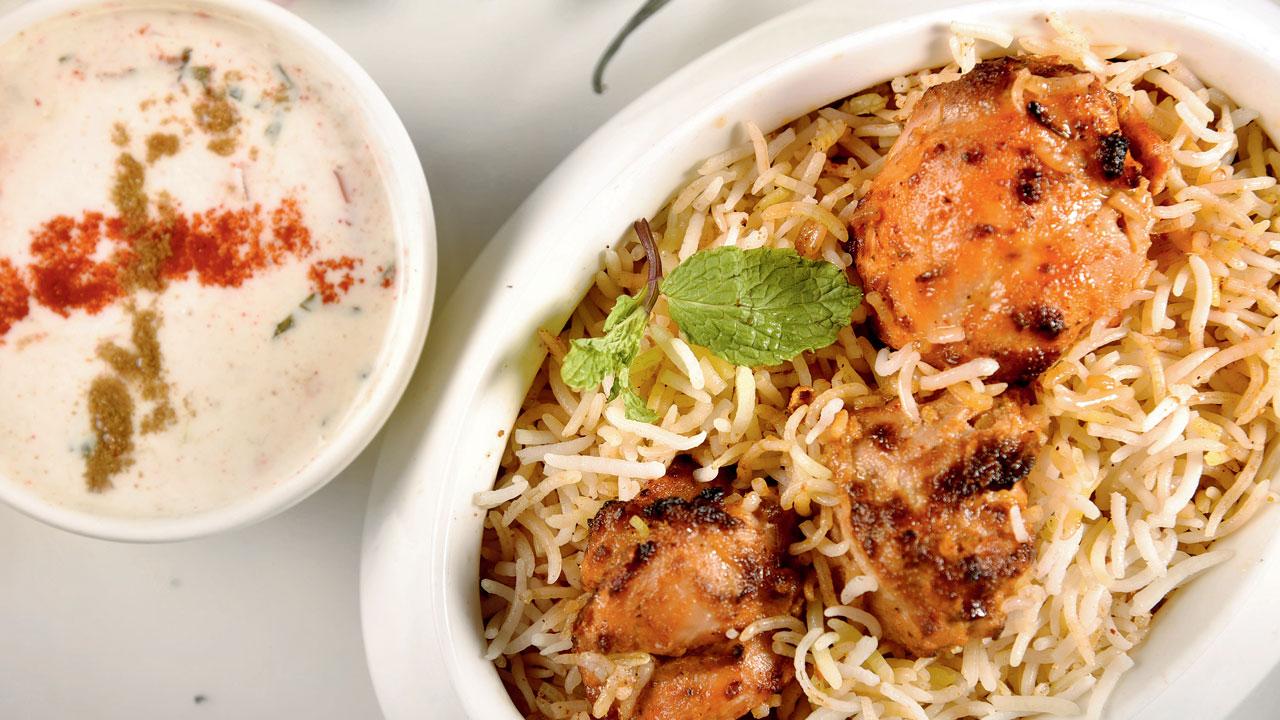
Yakhni pulao
Ingredients
1 kg mutton
1 large bowl dahi
3 medium size onions sliced
2 tbs ginger garlic paste
750 gm basmati rice soaked for half-an-hour
7 tbs ghee
1 cinnamon
5 black pepper
2 black elaichi
4 green elaichi
1 bayleaf
1 tsp shah zeera
1 tbs sauf, make a potli
Mint leaves chopped
2 green chillies slit
Freshly chopped coriander
Salt to taste
Method
Marinate mutton with dahi, salt and ginger-garlic paste for 1 hour. Then put all of it in a cooker with the whole garam masalas and sauf potli. Pressure cook for two whistles. Open lid and remove sauf potli. Stain the stock, keep aside and measure Now slice the onions, take ghee, put shah zeera and bay leaves. Saute the onions till translucent. Add the cooked mutton pieces with the whole garam masalas only and saute for two minutes. Add the stock and more water if required and let it come to boil. Now add the soaked rice and cover. Keep it on low flame. When nearly done, you can add two tbs of ghee optional. Sprinkle coriander, mint and green chillies and give it a dumm. Put a tava underneath the vessel and let it cook on the dumm for 10 minutes on low flame.
Warm kadha for Khajurgaon royals
Both my father-in-law and mother-in-law were culinary connoisseurs and fond of cooking,” says Abha Singh, who hails from the Khaurgaon royal family of Awadh. “Earlier, non-vegetarian food was our staple; the family preferred mutton over chicken and fish,” she says, “we would eat mutton or chicken once a day, but it wasn’t cooked in Khajurgaon Palace on Tuesdays. Now, the consumption of non-vegetarian fare is perhaps only three or four times a week.”
The family, which still resides in the lovingly restored 1896 structure in Lucknow, serves a groaning spread for lunch, while conscious attempts have been made to limit it for dinner. “Lunch is daal and rice, paneer or besan ki subzi, matar nimona, kadhi, a green vegetable, salad, raita, and chapati,” Singh tells us. “Dinner is mostly something grilled or roasted—a sandwich, pao-bhaji, soup or eggs.” Singh, who married in from the royals of Shankargarh (Allahabad district) says her mother, a princess, wasn’t fond of cooking and refrained from it. “We would try out recipes from books or magazines, but not often.” Even today, Singh prefers to cook only some of the signature dishes of the family.
The family opens the palace doors for highly exclusive dine-in experiences, accompanied by cultural performances. These have to be pre-booked and the rights of reservation stay with the family. “The family’s shami kebab and mutton qorma recipe is quite popular, and friends and family enjoy savouring it in the leisure of our home,” she says. “In the vegetarian menu, the besan ke aloo ki sabzi, matar nimona and sabzis made from soaked lentils are usually everyone’s favourite.”
A kadha made from cinnamon, chillies and ginger is Singh’s way out of colds and coughs, which she admits does not have many takers in the family. For them, illness means roti-sabzi, daal or soupy khichdi. Singh, however, is fond of sipping this warm cup of kadha on cold winter mornings, to boost her immunity for the season.
Abha Singh’s winter kadha
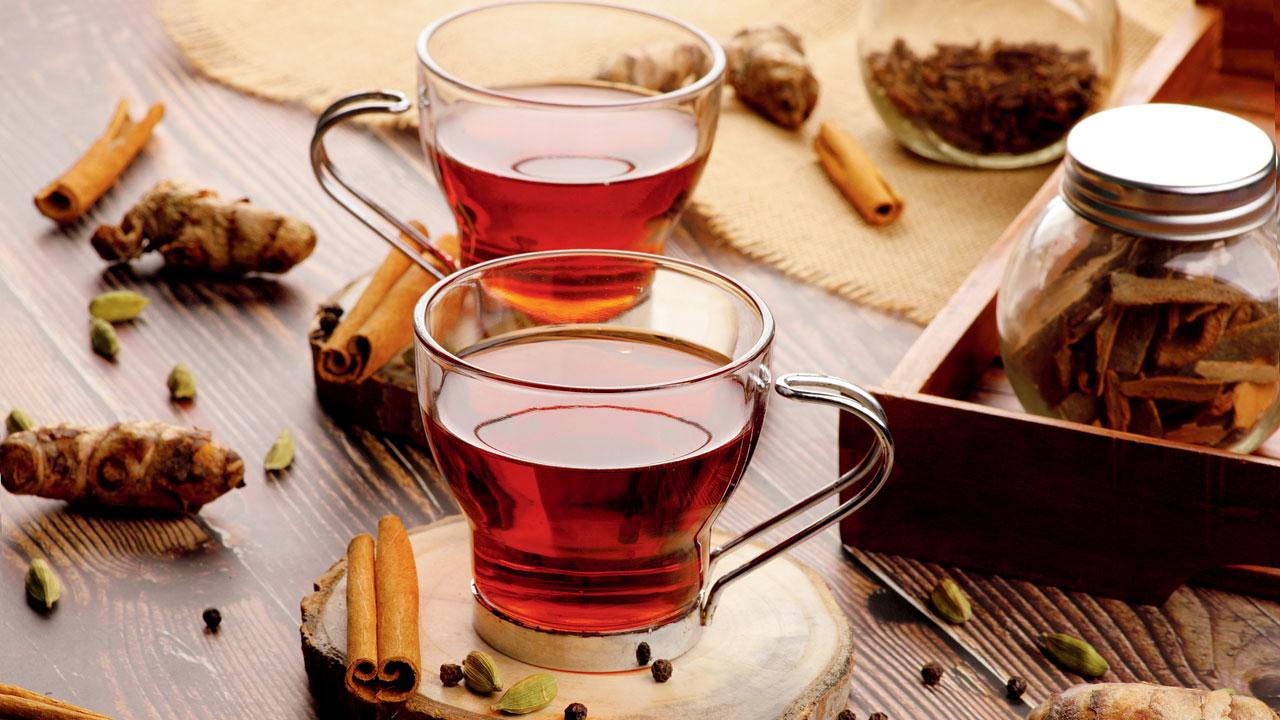
Ingredients
5-6 tulsi leaves
1 small piece of cinnamon
4-5 peppercorns
1 bayleaf
Half inch piece of ginger
Method
Boil all the ingredients together. Once done strain the liquid and add 1 tsp of honey to it, if medically allowed (Singh avoids honey as she is diabetic)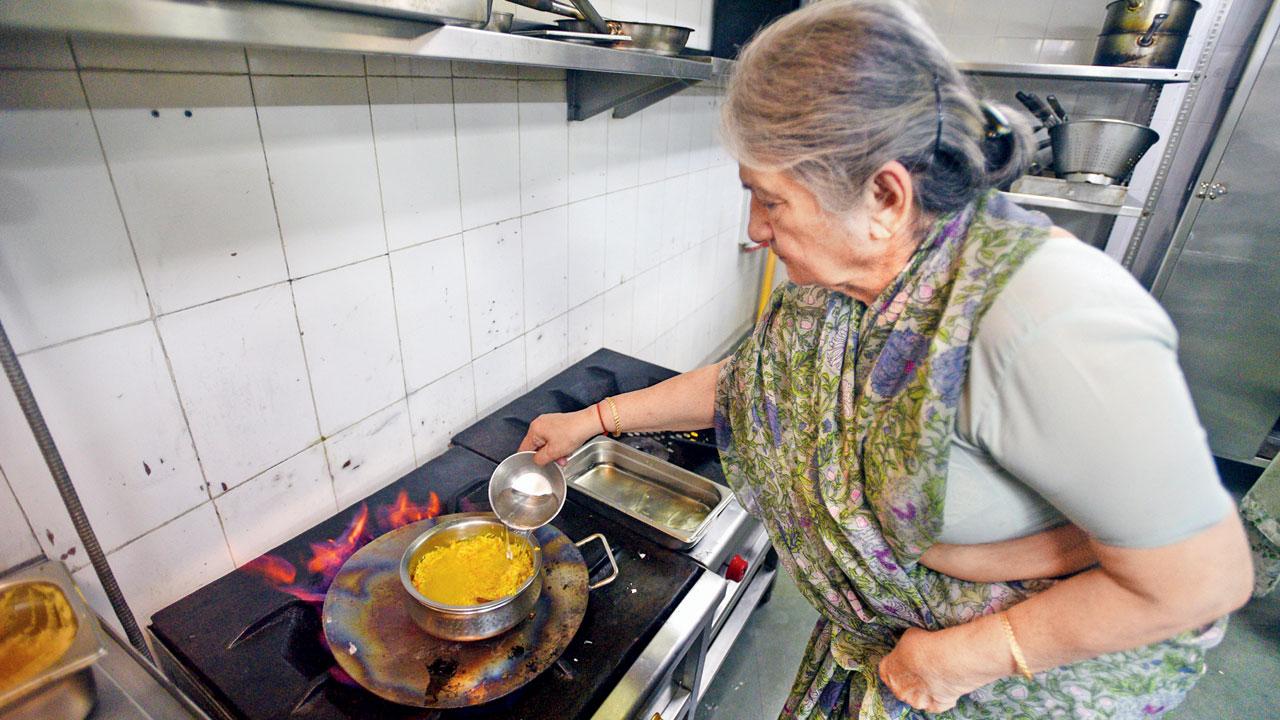
Khichdi and soup for the Nizams
Hyderabad-based Dilnaz Baig is the founder of Shaam-e-Ghazal evenings when she opens the doors of her Banjara Hills residence to serve a three-course Nizami meal. Recently, the 74-year-old was in Mumbai, offering signature delicacies such as shikampur (mutton patty stuffed with onion), Diwani handi (mixed vegetables), dum ki murgh (chicken with dry fruits and khoya), Hyderabadi haleem (pounded wheat and mutton cooked overnight), and khubuli (a chana-dal rice preparation) at Ummrao at the Marriott.
What does her dining table look like when there are no guests? “Roz, roz shaadi ka khana thode na kha sakte hai,” the Begum tells mid-day. When her two sons come down from the US, “there cannot be dinner without khatti dal— a simple toor dal with imli ka khatta, which can make or break this dish.” And for a meal for one? “I prefer the bare minimum,” she laughs, adding while she loves feeding people, when by herself she strays away from the hassle of making rotis.
“My go-to meal is khichdi made with rice and masoor dal, roasted nicely in a spoonful of ghee and ginger garlic paste,” she says. “My grandmothers had the patience to slow-cook the dish for hours and hours. I let it simmer for a short while.” In winter, it’s soup. “I use leftover chicken and mutton bones, add some vegetables and give it a nice boil. Once done, I sieve and pair it with a simple salad to make it a whole meal.”
Breakfast is a poached egg, toast and nimbu achaar. “And, a big tumbler of filter coffee,” she adds. She admits she’s not a big fan of vegetables, but loves fruits and can have as many as five a day. “Usually, it’s seasonal fruits from our backyard such as grapefruit or papaya.”
Dilnaz Baig’s soup
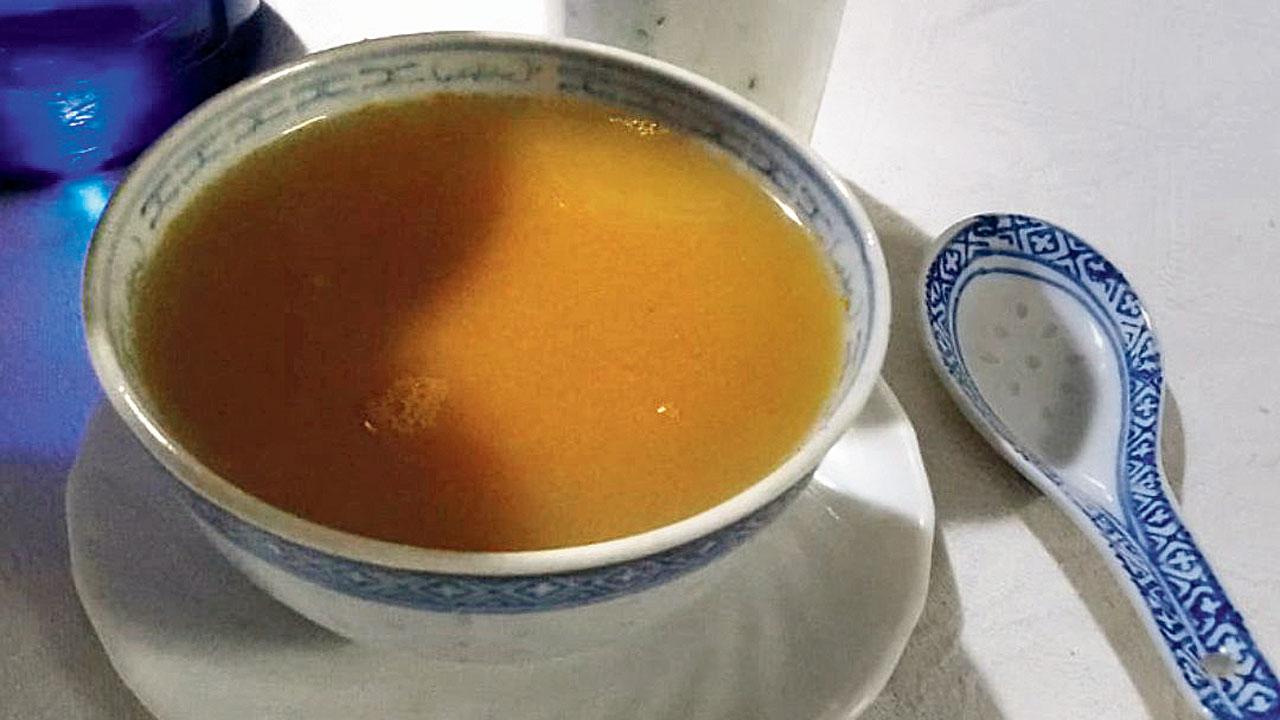
INGREDIENTS:
250 gm lamb bones (washed well)
1 carrot, peeled and chopped
100 gm potatoes
2-inch piece of ginger (finely chopped)
½ kg tomatoes, 2 onions
A fistful of mint leaves
Small piece of cinnamon (during winter)
Salt and pepper to taste
METHOD
Put everything in a pressure cooker, and cook for five whistles. Once done, take out the bones, sieve the liquid, and serve hot with toast and salad on the side.
 Subscribe today by clicking the link and stay updated with the latest news!" Click here!
Subscribe today by clicking the link and stay updated with the latest news!" Click here!








